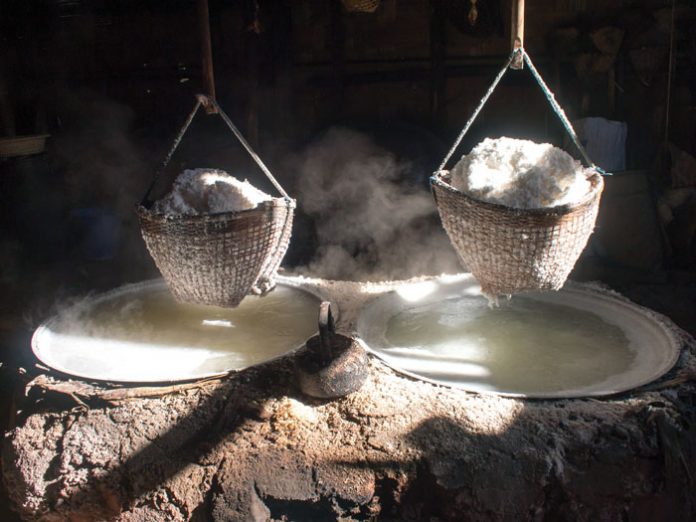Low-salt diets are gross. Look, they are, let’s not pretend otherwise. Sure, you came up with a recipe for chicken soup that you claim is so good, you “totally can’t tell it’s salt-free,” but if you truly believe that, I have several bridges and some magic beans to sell you. And sure, just like we can eventually get used to a world without flowers, or co-existing with swarms of mosquitoes, or other things that make life hardly seem like it’s worth the effort, you can eventually make your taste buds get used to the lack of salt. However, that doesn’t mean that pretty much every food with the exception of coffee wouldn’t be approximately a million times better with just a sprinkle of salt added to it. Sodium? More like sodi-YUM.
It turns out that your taste buds, and not the doctor’s advice, might have gotten this one right. A low-salt diet, according to new research, might be something to take with a grain of—well, you know.
Salt, or sodium chloride, is a crystalline compound found in either a living sea or the remains of one that has dried up. It can manifest as salty water that needs to be boiled down for the salt to be revealed and used, or in the form of salt licks and caverns composed of the white grains. Salt can also be mined: there are veins of the mineral beneath the surface of the earth, some of them thousands of feet deep.
It is also pretty much magical. This naturally occurring mineral enhances flavor, but more importantly, it preserves perishable foods, an essential in the days before refrigeration. Without the substance, life would cease to exist; the human body does not produce sodium but it needs it, since salt is relied upon for maintaining blood pressure and the transmission of nerve impulses.
So how did the idea of a low-sodium diet become so prevalent?
The balance of sodium in the blood stream must be carefully maintained. The common theory held for decades is that if a person a-salts their body (see what I did there?) with a lot of salt, they will become thirsty and drink more water, causing a dilution of the blood that makes it difficult to maintain the proper balance of sodium. The end result is high blood pressure.
“Think of a cake,” my husband explains to me when I have a hard time wrapping my mind around the science of it (because to me, the science of salt is less science and more math: food plus salt equals yummy). “Think of a double fudge chocolate cake with mint icing.”
“Do you want me to think of a double fudge chocolate cake with mint icing because you want me to make you a double fudge chocolate cake with mint icing?”
“It’s for the sake of science.”
“Obviously.”
“Anyway, if you put in double the amount of salt by accident, what do you do to fix it?”
“Cry?”
“…or?”
“Double the rest of recipe?”
“Yes. Do you get it? If the body makes double the blood as a result of the higher levels of sodium in an effort to maintain salt equilibrium, then what do you have?”
“More blood. More blood pressure. Higher blood pressure!”
“Exactly. Now make some cake. Please?”
Too much salt equals high blood pressure, ergo—the thinking goes—a low-salt diet is necessary, lest we suffer the many ill effects of high blood pressure. At least, this has been the theory for a low-salt diet since the ’70s, when Lewis Dahl established what the scientific community saw as proof that too much salt causes hypertension.





















